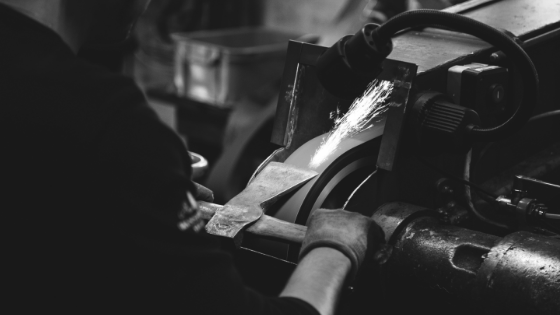Review Control Measure Effectiveness
After you have implemented an effective system of controlling exposure to the hazardous substance(s), ongoing maintenance and management is essential. When working properly, your combined control methods either completely prevent exposure or reduce exposure to a safe level.
But if one part of the system fails or becomes ineffective, the result can be dangerous. It is therefore important to review the effectiveness of your control measures regularly to minimise the risk.
What Do You Need to Consider?
There are three different elements to consider when checking your control systems:
- Physical – Is the control measure in a good state of repair? Perhaps the item has been damaged, or you can see the early stages of degradation or rusting?
- Mechanical – Is your control measure working as it should internally? Is it still operating smoothly or effectively?
- Human – Are all of your staff using the equipment correctly? Are they being correctly supervised? Are your records being correctly updated?
How Often Do I Need to Check the Control Methods?
You need to implement a systemised plan to check your control methods, and these need to form part of your business’ management plan. HSE guidance states that you need to carry out checks on your control methods ‘regularly’. However, this in itself is inherently arbitrary. So, what exactly does this mean?
How regularly you make your checks depends on both the reliability of your control measure, and how easily it could fail. For instance, if it is correctly set up, and the necessary checks have been made, Local Exhaust Ventilation (LEV) should be more reliable than people wearing dust masks correctly.
After installing a new control method (or after making a change to an existing control method) you may initially need to check more frequently. For example, in the case of installing a new LEV dust collection bin and filter on a powder coating unit, you may need to make checks daily – or even less frequently – initially. However, once the process is ‘bedded in’ and it has been established how quickly the unit needs to be cleaned, you may be able to conduct checks on a less frequent basis.
A Team Effort
Involving your staff with the set-up of your system and in completing the checks can make it more likely for processes to be followed properly. This enhanced understanding in turn improves overall workplace safety; staff understand how the system works and how to recognise potential problems or faults.
A good example must be taken by the management to ensure thorough checks are completed at the necessary time; generally, this will increase the staffs’ sense of responsibility in their work, helping to identify faults before they become a bigger problem.
Reviewing Critical Elements
After implementation of the control measures and proof of a system’s effectiveness has been established, the main focus should be to review the critical elements. You may also be required to assess or measure exposure to hazardous substances.
Only an experienced professional who understands occupational hygiene assessment techniques can make such an assessment. However, depending on the situation, further checks may be required, such as air or surface wipe monitoring.
These checks would then be compared with an official exposure benchmark.
Extra Checks Where PPE is Used
Because it is only used as a last resort, extra checks should take place in situations where PPE is used. In order to optimise control, is vital to check that PPE is being used, cleaned and maintained correctly.
We’re here to help
At Workplace Exposure, our expert team have experience working with a variety of different businesses to ensure they offer a safe, compliant working environment. Our professional solutions and advice help to ensure your business meets compliance standards and is operating to best practice. If you need help in carrying out a COSHH air monitoring survey to help select the correct PPE, or your workplace noise assessment, we’re here to help.
Our approach
Get in touch with Workplace Exposure. Either give us a call on 0800 689 4386, or fill in our enquiry form to discuss your monitoring or consultancy requirements.
We’ll then provide you with a no obligation proposal, we can often give an initial idea of fees whilst we discuss your needs.
Once you’ve accepted our proposal we can then schedule the work.
Following our site visit we’ll provide you with a comprehensive report giving you advice, recommendations and control measures where appropriate. Implement the outcomes for compliance and a happier healthier workplace.
